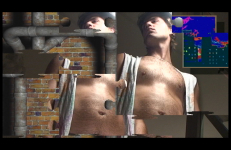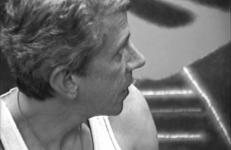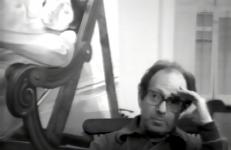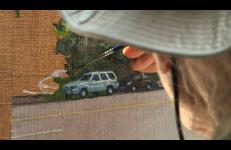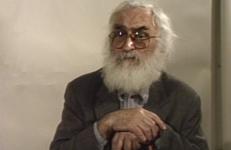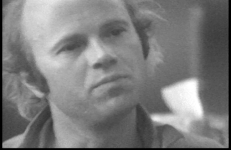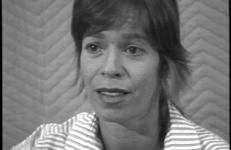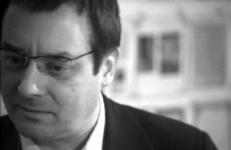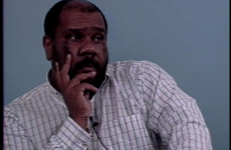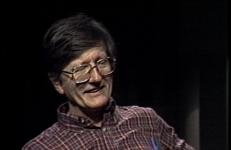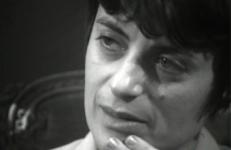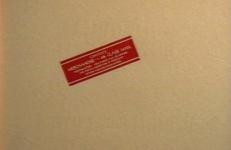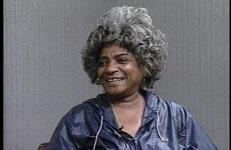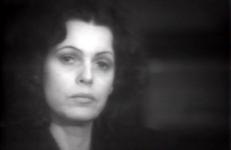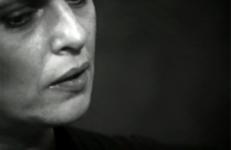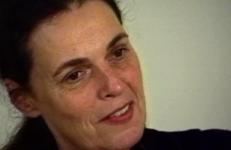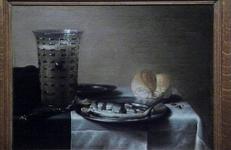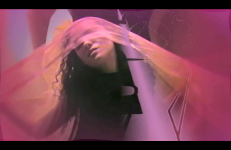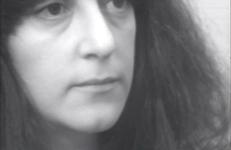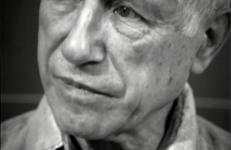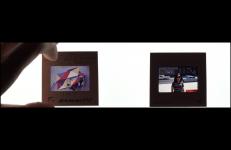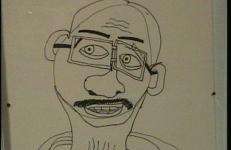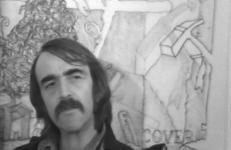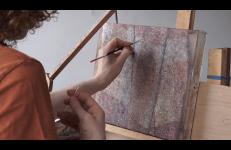Toxic pigments of lust stain an artist’s brush as he struggles against lurid colors on the canvas of his life, – a "life" in brick jungles wit sordid, dark alleys on neon-lit avenues where he got lost… Will he, can he, find a new, unsoiled canvas on which to paint a better life?
Painting
Polish-American arist Ed Paschke (1939-2004) received his BFA from the School of the Art Institute of Chicago in 1961 and his MFA in 1970. Paschke was known as a member of the late-1960s Chicago Imagist movement, a group of artists who called themselves The Hairy Who, whose expressive style of figurative painting was rooted in outsider art, popular culture, and Surrealism. Paschke's fascination with the print media of popular culture led to a portrait-based art of cultural icons. Paschke used the celebrity figure, real or imagined, as a vehicle for explorations of personal and public identity with social and political implications.
Philip Pearlstein (b.1924) began painting figures in the 1960s and is known as a leading figure in American Realism. Throughout his career, Pearlstein's paintings evolved from an expressionistic style to a meticulously analytical vision. His work attempts to present the model as a documentation of the painting session, and his paintings are closely rendered under the existing studio lighting. Attuned to art history, Pearlstein is as interested in pattern and composition as he is in the body itself.
Since the early 1970s, Rackstraw Downes has committed himself to painting from observation, on site, from start to finish. He has painted both urban and rural landscapes, as well as interior spaces, in New York, Texas, and Maine. Although he paints exactly what he sees, through his labor ordinary sites become transformed into extraordinary scenes.
Milton Resnick was born in Bratslav, Russia in 1917, and immigrated to the United States in 1922. Resnick was one of the few survivors of the second generation Abstract Expressionists, and is known for his large, thickly painted abstract canvases. Like other painters of the time, Resnick was striving for an overall quality to his paintings, a way to unite the foreground and background. While others moved toward throwing or dragging quantities of paint across the face of the canvas, Resnick retained a particularly personal and impassioned relation to brush painting.
Freed documents artist James Rosenquist at home in an East Hampton, N.Y studio in March 1972. Rosenquist and his collaborators work on a project entitled 47 Dirty Band Aids with blaring music dominating the environment while they paint. Somewhat ironically Rosenquist describes each colour for the black and white video as he applies it to a large panel. With the camera roaming between the two of them Freed interrogates Rosenquist in a quieter moment, probing him for the intentions and ultimate destination of his work.
Painter, Susan Rothenberg (b.1945) is known for her poetic, atmospheric images. From her early horse paintings to her paintings of athletes and dancers, Rothenberg's works have always been subservient to the flatness and objectivity of her gesturally dense surfaces. In her paintings, image and surface combine in a private symbolism and restrained drama that is physically and emotionally intrusive. Rothenberg currently lives and works in New Mexico.
American painter, Robert Ryman (b. 1930) is associated wth the movements of monochrome painting, minimalism and conceptual art. The artist first moved to New York City from Nashville with the intention of becoming a jazz musician. In 1953 he took a temporary job—where he would ultimately work for seven years—as a guard at the Museum of Modern Art. Soon after, he would decide to devote his career towards painting. In his first paintings and collages from the mid-1950s, he experimented with material, color and brushwork, eventually reducing the painting to its barest elements.
Juan Sanchez explores his Puerto Rican heritage and the issue of Puerto Rican independence through his work as an artist and writer. Combining painting, photography, collage, and printmaking techniques, Sanchez’s art joins images of contemporary barrio life with memories of Puerto Rico, and addresses a fragmented Latino community fraught with political resistance and cultural alienation.
Interview by Bibiana Suarez.
A historical interview originally recorded in 1990.
Painter Peter Saul’s iconoclastic paintings parody various aspects of contemporary American life, from politics to sex to violence. He has been an inspiration to several generations of American painters and is retired from the Department of Fine Arts at University of Texas-Austin. Interview by Jim Johnson.
Canadian-born artist Miriam Schapiro (b.1923) was one of the great forces behind the feminist art movement in Los Angeles. Originally painting in an Abstract Expressionist manner, she developed a new, more personal style of assemblage she called “femmage” as she became more politically involved. She was also one of the first scholars to create a curriculum on Feminist Art at CalArts. Through the use of large scale media and symbols emblematic of the female, she has battled to pay homage to women and their undervalued domestic traditions.
Hollis Sigler (1948–2001) was a Chicago-based artist. She received degrees from both Moore College of Art and the School of the Art Institute of Chicago. Her mature artistic style was faux-naïve, featuring paintings whose subjects, furniture and clothing set in doll-house type interiors and suburban landscapes, were stand-ins for the implicitly female figure. She was an openly lesbian artist and a prominent member of the faculty of Columbia College in Chicago.
For the past 20 years Alexis Smith's mixed media work has explored primal American myths: the open road, the bad/good guy/gal, the quest for romance, and the search for paradise. This portrait of the artist explores the roots of her thought and work, and was produced in conjunction with her exhibition at the Whitney Museum of American Art, held in November 1991.
Washington, D.C.-based African-American artist Sylvia Snowden paints what she calls “figural or structural abstract expressionist” works. Three years after this tape was produced, her son was shot to death, and she spent the next three years producing 87 works in a variety of media.
Pat Steir (b.1938) is an American painter and printmaker, whose work has resisted artworld currents and factions for decades while maintaining enthusiastic critical support.
Pat Steir (b.1938) is an American painter and printmaker, whose work has resisted artworld currents and factions for decades while maintaining enthusiastic critical support. She graduated from Pratt in 1962 and in 1964 was included in the show Drawing at the Museum of Modern Art in New York and had her first solo exhibition at the Terry Dintenfass Gallery, New York. She first came to prominence in the 1970s, when her work concentrated on signs and symbols and was close to minimal and conceptual art.
Pat Steir is an American painter and printmaker whose work has resisted artworld currents and factions for decades, while expanding its reach and maintaining enthusiastic critical support. She graduated from Pratt in 1962, and in 1964 was included in the show Drawing at the Museum of Modern Art in New York and had her first solo exhibition at the Terry Dintenfass Gallery, New York.
According to Harun Farocki, today's photographers working in advertising are, in a way, continuing the tradition of 17th century Flemish painters in that they depict objects from everyday life - the "still life". The filmmaker illustrates this intriguing hypothesis with three documentary sequences which show the photographers at work creating a contemporary "still life": a cheese-board, beer glasses and an expensive watch.
Taste the delicious colors of "SWEET NOTHINGS" and observe the dice of desire being tossed on a gambler’s bed like yesterday’s candy. See tomorrow’s chocolate bunny melt into a brown puddle and feel a sticky, rainbow colored lolly-pop thats stuck to six feet of skin that secrets pent up passions... It’s all here for you to eat and is guaranteed to fatten your eyes!!
Marcia Tucker (1940 - 2006) was a curator, writer and art historian, known for founding the New Museum of Contemporary Art after her dismissal from her curatorial post at the Whitney Museum of American Art due to creative disagreements. Tucker served as the visionary director of the New Museum from 1977 to 1999, during which time she organized major exhibitions like The Time of Our Lives (1999), A Labor of Love (1996), and Bad Girls (1994), and edited the series Documentary Sources in Contemporary Art. As a curator,Tucker championed social engagement, exploration and artistic process. She considered the museum a “laboratory” organization where both art and the practices of the institution itself were always in question. After leaving the New Museum, and until her death in 2006, Tucker worked as a freelance art critic, writer, and lecturer.
Jack Tworkov (1900-1982) was an important member of the first generation of Abstract Expressionist painters and was, for a number of years, head of the Yale University art program. During the Depression, Tworkov worked for the WPA Federal Art Project, and became friends with artists such as Willem de Kooning, Arshile Gorky, and Mark Rothko; their work was the foundation of the New York School of painting. Late in his career, his work became more geometric, as the mark and gesture was increasingly determined by isometric grid structures.
This project started with an email from a stranger in 2017. The sender was the widower of the late artist Tania and he invited the filmmaker to look at her “archive.” Tania was born to Jewish parents in Poland in 1920. The family moved to Paris in the 1930s, but during the WWII they fed to Montreal, then emigrated to New York. Tania eventually became an artist. While facing many hurdles as a female artist in the 1960s and 70s, Tania vigorously created a wide range of artworks, not only paintings and three-dimensional pieces, but also public art projects.
A series of portraits either stroked on canvas or snapped on photo emulsions becomes the theme of this travelette as the viewer relives the visions that confronted me during a hop and skip excursion over state lines and bodily curvatures.
William T. Wiley (b. 1937) combines a variety of materials (found objects, wood, animal hides, rope, paint) with poetry, puns, hearsay, and legends to present a very complex and enigmatic personal vision. Besides making sculpture, he also does prints, drawings, and paintings. His witty and often ironic work emphasizes both the commonality and impenetrability of everyday life and its contents. Wiley continues to live and work in the San Francisco Bay area.
Ellen Altfest is known for her representational paintings in which she renders every detail of her subjects on a one-to-one scale. The World Must Be Measured by Eye follows the meticulous, repetitive and painstaking creative process of Altfest—the painter studies the subject, mixes paint, matches colors, measures the distance and puts the paint on the canvas with a small brush. Through observing Altfest’s practice, The World Must Be Measured by Eye examines the act of creation and the act of seeing.




